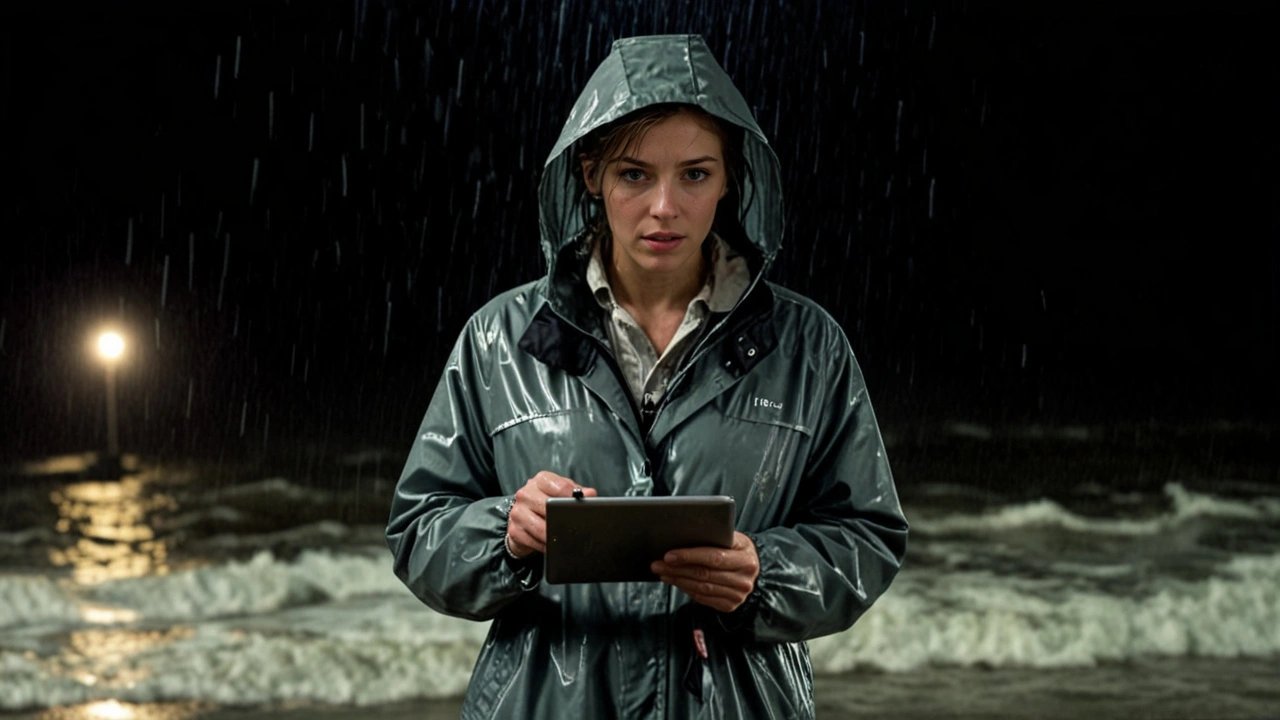Hurricane Beryl Hits Texas Amid Global Weather Chaos
On July 8, 2024, Hurricane Beryl roared ashore in Texas, leaving a trail of destruction and uncertainty in its wake. This Category 2 hurricane struck the Texan coastline with winds reaching up to 110 mph, forcing thousands of residents to brace for impact and take shelter. CNN meteorologist Derek Van Dam reported live from Port Lavaca, providing real-time updates and insights into the unfolding catastrophe.
Beryl’s approach toward Texas had been closely monitored for days, and various hurricane watches were issued well in advance. The preparations by state officials were meticulous, involving evacuation routes being cleared, emergency supplies being distributed, and shelters being equipped to accommodate those displaced by the storm. Yet, despite these efforts, the power of Hurricane Beryl was evident as it uprooted trees, demolished structures, and cut off electricity for many residents. The sensory overload of howling winds, torrential rains, and the sight of once-familiar landscapes turned unrecognizable struck a chord with both the affected and those watching from afar.
Impact on Coastal Communities
Port Lavaca, a small community with deep-rooted ties to the Gulf waters, became a focal point of Beryl's fury. Van Dam's reports highlighted the human aspect of the storm, as he interviewed several locals who chose either to evacuate or to stay behind. Some residents noted that while they had faced hurricanes before, Beryl felt different – more intense, more unpredictable. The emotional resilience and solidarity among the community members were palpable, even as they grappled with their losses.
The hurricane's storm surge was particularly devastating. Many homes and businesses along the waterfront were inundated with seawater, causing both immediate and long-lasting damage. Infrastructure took a severe hit – roads were washed out, communication lines severed, and water supplies compromised. Hospitals and emergency services worked tirelessly, often under extreme conditions, to attend to the injured and provide care to those with chronic illnesses exacerbated by the storm.
Reverberations in Mexico and the Caribbean
Before reaching Texas, Hurricane Beryl had already made its mark on Mexico and several Caribbean islands. In Mexico, heavy rainfall led to localized flooding and landslides, prompting many areas to declare states of emergency. Communities in low-lying regions were particularly vulnerable, and the disaster response teams worked round the clock to provide relief and relocate people to safer areas.
In the Caribbean, Beryl’s rainbands spawned severe weather across multiple islands. Jamaica, in particular, witnessed significant wind damage and flooding. Videos circulating on social media captured harrowing scenes of streets turned into rivers, homes swamped, and residents wading through waist-deep water. For many, the cleanup and recovery process will be long and arduous.
Historical Significance of Hurricane Beryl
Hurricane Beryl is now etched into the annals of history as one of the more impactful storms of the 2024 hurricane season. Its trajectory, from the Caribbean to the Gulf Coast, underscores the vulnerability of regions frequently visited by such tropical systems. Climate scientists have pointed to Beryl as another indicator of the growing intensity of hurricanes attributed to climate change. Warmer ocean waters and changing atmospheric conditions contribute to these more powerful storms, which bring with them not only wind and rain but also socioeconomic challenges. The repeated battering of communities by such events raises questions about sustainable development and disaster preparedness.
Other Extreme Weather Events Around the World
While Hurricane Beryl dominated headlines in the Western Hemisphere, other parts of the world were also grappling with their own extreme weather events. In Bangladesh, the annual monsoon season brought with it devastating floods. Entire villages were submerged, crop fields ruined, and millions of people displaced. The efforts of aid organizations have been crucial, but the scale of the disaster was overwhelming.
In New Mexico, residents faced unusual weather patterns with severe thunderstorms causing flash floods and infrastructure damage. The normally arid region was unprepared for the sudden onslaught of rain, leading to widespread disruption. Meanwhile, on the other side of the United States, California was in the grips of yet another wildfire season. Dry conditions and high winds turned parts of the state into a tinderbox, leading to uncontrollable blazes that consumed thousands of acres, destroying homes and wildlife habitats in their path.
The Bigger Picture: Climate Change and Extreme Weather
All these weather events, from Hurricane Beryl to the monsoon floods in Bangladesh and the wildfires in California, share a common thread – the impact of climate change. Scientists have long warned that rising global temperatures would lead to more frequent and intense weather events. The effects are now more visible than ever, prompting a re-evaluation of policies related to climate change mitigation and adaptation.
Communities worldwide are being forced to adapt to this new reality. Urban planners are rethinking city layouts to make them more resilient to floods, architects are designing buildings that can withstand stronger winds, and governments are investing in early warning systems to better prepare for natural disasters. It's a monumental task, requiring cooperation across borders and sectors.
As Hurricane Beryl's aftermath continues to unfold, the stories of resilience and recovery will inevitably surface. But Beryl also serves as a stark reminder of the urgent need for concerted action against climate change. The interconnectedness of the world's climate system means that what happens in one part of the globe can have far-reaching effects elsewhere. The time to act is now, to ensure a safer and more sustainable future for all.

